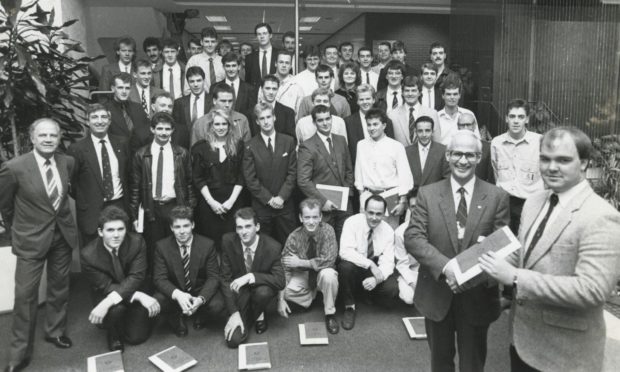When Shell opened its Tullos complex, it was described as the oil company’s Aberdeen nerve centre “making the city the centre of the North Sea industry”.
The distinctive, triangular building on Altens Farm Road, with its gold-tinted windows is a familiar landmark as you drive up Wellington Road.
Visible from Torry, Shell’s headquarters on the hill has dominated the Tullos skyline since it was officially opened by Prime Minster Margaret Thatcher in September 1979.
From the early days of North Sea exploration to the challenges of recent years, many of those working in the oil industry will be familiar with Shell’s Tullos premises.
Take a step back in time with these archive images of Shell’s early days, when the cut and thrust of a new industry was brought to the once quaint community of Tullos.
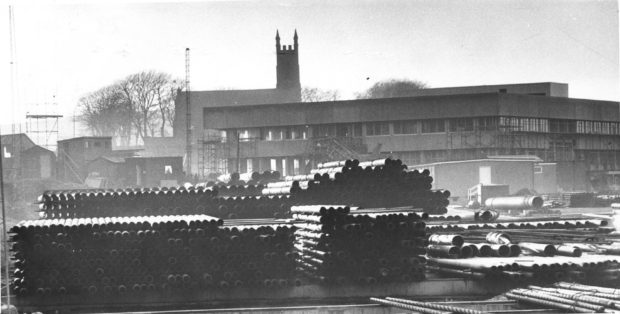
Shell had a presence in Tullos from the early 1970s after the major discovery of North Sea oil in 1969.
Tradition meets technology in this photo above from 1973 showing Shell’s first northern headquarters at Tullos with Nigg Church in the background.
The building housed 230 staff in the fledgling days of the industry in Aberdeen.
It would be another two years before the first oil flowed ashore to a terminal at Cruden Bay and already an expansion was on the horizon for Shell.
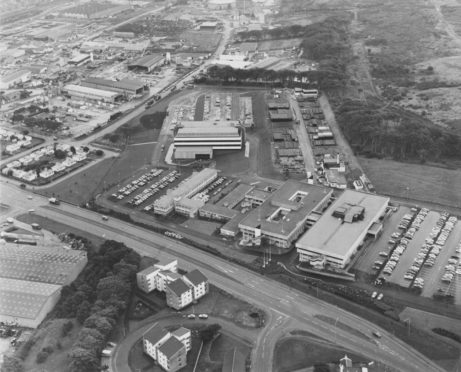
At the centre of this aerial photo from August 1979 is the £30 million phase four of Shell Expro’s North Sea headquarters ahead of its official opening in September.
The Press and Journal said at the time the building was “a visible reminder to any doubters that the oil industry is in the North Sea and Aberdeen to stay long term”.
And speaking at the opening ceremony on September 7, Prime Minister Margaret Thatcher said: “The new pioneers of the oil industry are equal in imagination and resource, in their skill and their initiative, to the great pioneers of the industrial revolution.
“They don’t fear change. If they did, the riches of the North Sea would remain untapped, our nation would be poorer, and we would still be depending on others for what we are now able to produce ourselves.”
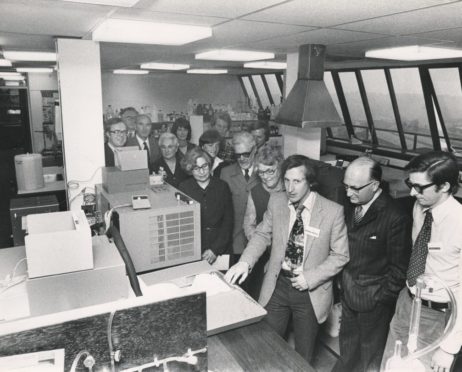
A new production chemistry laboratory opened at Shell’s northern HQ in June 1980 as part of the company’s expanding North Sea operations.
Production chemistry plays a vital role in oil and gas extraction, analysing crude oil and evaluating other chemicals and materials.
In this photo, laboratory technician Douglas Clark demonstrates some of the new equipment to Aberdeen members of the Society of Chemical Industry and the Royal Society of Chemistry.
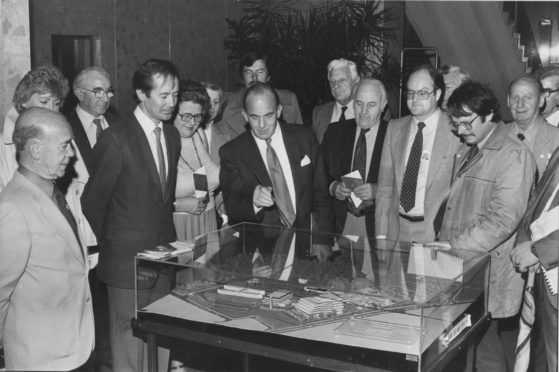
Plans were announced for another extension to Shell’s complex at Tullos to house its ever-growing numbers of staff.
Temporary office accommodation for a further 350 personnel had been erected in the car park in 1980 while the plans for phase five were finalised.
In this photo from September 1984, Shell’s Aberdeen head of administrative services John Lince shows district councillors a scale model of the newly-opened building.
The futuristic phase five building was designed to accommodate a further 750 employees.
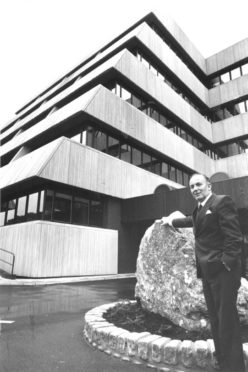
Taking pride of place outside the entrance to the new building on the opening day was a rock lifted from the seabed during extraction.
John Lince stands next to the sizeable stone which was lifted 500ft up from under the Brent Alpha Field.
Shell’s Brent Field, located east of Shetland, was one of the most productive parts of the UK’s offshore assets in its heyday, but is now being decommissioned.
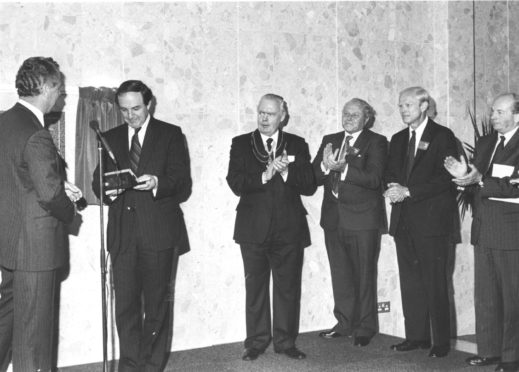
Dr John Jennings, managing director of Shell UK Exploration and Production, presents Scottish Secretary George Younger with a mounted piece of rock from the North Sea.
Mr Younger was in Aberdeen to officially open the new phase five extension to Shell’s Tullos base in 1984.
Looking on are Lord Provost Henry Rae and fellow dignitaries Archie Foster, Joe Hammer and Lord Arbuthnot.
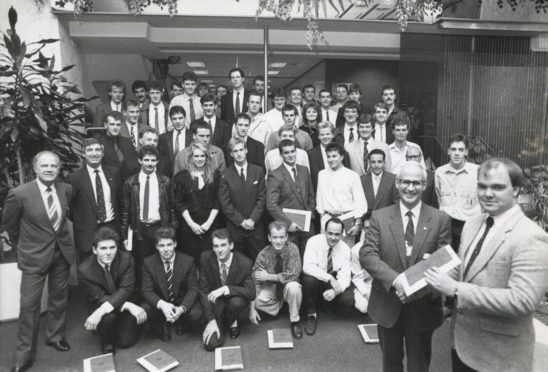
Students from across the UK attended Shell’s Aberdeen HQ for a graduation ceremony in September 1988 after successfully completing the Shell Expro Technician Trainee Scheme (SETTS).
On the right, Ian Henderson, director of operations, presents Kevin Barrie of Macduff with his graduation certificate.
SETTS applicants had to be aged between 17 and 20 on day of entry, and had to undergo a stringent recruitment process to be accepted onto the course.
The three-year course provided a foot in the door for many school-leavers and extensive training for forging a career in the oil and gas industry.
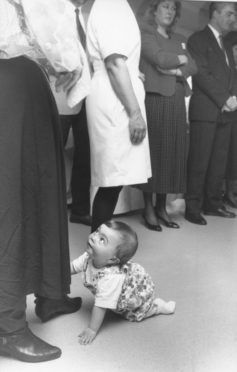
And possibly one of Shell’s youngest recruits was little Jack Smith who, aged just eight months, stole the show during the opening of the new Altens Nursery at Shell’s HQ.
The purpose-built £300,000 creche was opened in April 1993 to cater for and provide full daycare for the children of Shell Expro staff.
In more recent times, recession, oil downturns and the Covid-19 pandemic have had a huge impact on the oil and gas industry.
Many companies have been forced to rethink their declining North Sea operations and Shell is just one of many downsizing to smaller premises.
It was announced last week that the major operator would be saying farewell to its symbolic Aberdeen base at Tullos, with plans to move to the Silver Fin building on Union Street.
See more like this:
